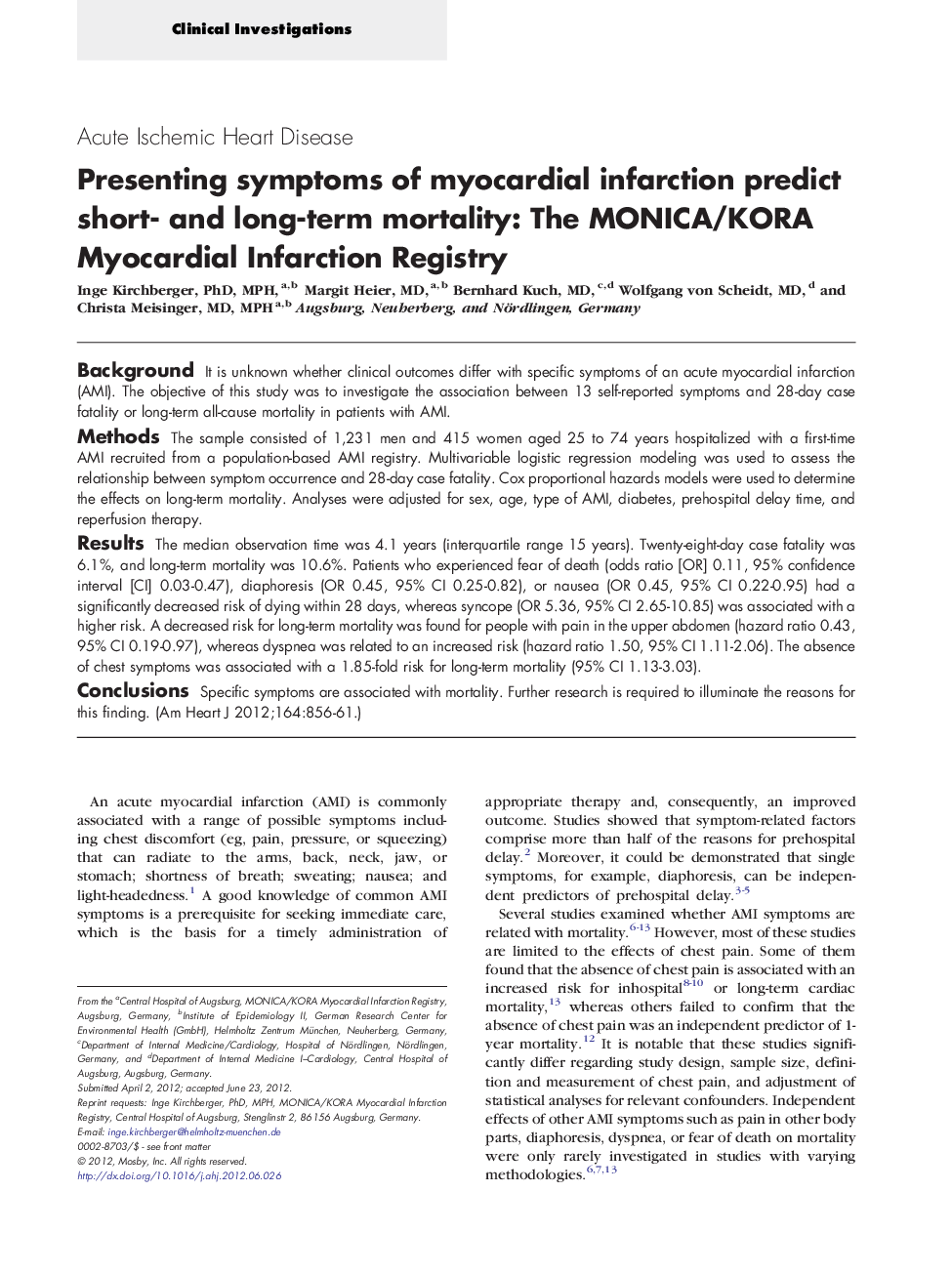| Article ID | Journal | Published Year | Pages | File Type |
|---|---|---|---|---|
| 2848849 | American Heart Journal | 2012 | 6 Pages |
BackgroundIt is unknown whether clinical outcomes differ with specific symptoms of an acute myocardial infarction (AMI). The objective of this study was to investigate the association between 13 self-reported symptoms and 28-day case fatality or long-term all-cause mortality in patients with AMI.MethodsThe sample consisted of 1,231 men and 415 women aged 25 to 74 years hospitalized with a first-time AMI recruited from a population-based AMI registry. Multivariable logistic regression modeling was used to assess the relationship between symptom occurrence and 28-day case fatality. Cox proportional hazards models were used to determine the effects on long-term mortality. Analyses were adjusted for sex, age, type of AMI, diabetes, prehospital delay time, and reperfusion therapy.ResultsThe median observation time was 4.1 years (interquartile range 15 years). Twenty-eight-day case fatality was 6.1%, and long-term mortality was 10.6%. Patients who experienced fear of death (odds ratio [OR] 0.11, 95% confidence interval [CI] 0.03-0.47), diaphoresis (OR 0.45, 95% CI 0.25-0.82), or nausea (OR 0.45, 95% CI 0.22-0.95) had a significantly decreased risk of dying within 28 days, whereas syncope (OR 5.36, 95% CI 2.65-10.85) was associated with a higher risk. A decreased risk for long-term mortality was found for people with pain in the upper abdomen (hazard ratio 0.43, 95% CI 0.19-0.97), whereas dyspnea was related to an increased risk (hazard ratio 1.50, 95% CI 1.11-2.06). The absence of chest symptoms was associated with a 1.85-fold risk for long-term mortality (95% CI 1.13-3.03).ConclusionsSpecific symptoms are associated with mortality. Further research is required to illuminate the reasons for this finding.
